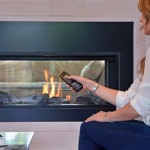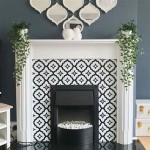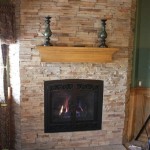Gas Fireplace Draft Problems: Causes and Solutions
Gas fireplaces offer a convenient and aesthetically pleasing heating solution for many homes. Unlike traditional wood-burning fireplaces, they provide instant warmth with minimal mess. However, one common issue that homeowners encounter is a draft, which can negate the benefits of a gas fireplace and lead to discomfort and increased energy costs. Understanding the causes of these drafts and implementing appropriate solutions is essential for maintaining a comfortable and efficient living space.
A draft in a gas fireplace occurs when air flows in the opposite direction of what is intended. Ideally, combustion gases should be expelled safely through the vent or chimney, creating a negative pressure that draws air into the firebox. However, when a draft is present, cold air from outside can enter the home through the fireplace, making the room feel colder and potentially affecting the fireplace's performance.
Negative Pressure in the Home
One of the primary drivers of gas fireplace draft problems is negative pressure within the home. This condition arises when appliances or systems within the house exhaust air at a rate faster than it can be replenished. Common culprits include range hoods, clothes dryers, and bathroom exhaust fans. These appliances create a vacuum-like effect, drawing air from any available source, including the gas fireplace vent. If the fireplace vent is not adequately sealed or if the chimney lacks sufficient draft, the negative pressure can overcome the natural upward flow of air, resulting in a downdraft.
To mitigate negative pressure, consider the following strategies. First, ensure that exhaust fans are used judiciously and only when necessary. Second, investigate the installation of a makeup air system, which introduces fresh air into the home to compensate for the air being exhausted. Makeup air systems can be ducted directly to appliances that create significant negative pressure, such as range hoods. Third, weatherize the home by sealing air leaks around windows, doors, and other openings. This reduces the overall air leakage rate and minimizes the impact of negative pressure.
Another factor contributing to negative pressure is the tightness of modern homes. Newer homes are often built with enhanced insulation and air sealing to improve energy efficiency. While this is beneficial for reducing energy consumption, it can also exacerbate negative pressure issues if not properly addressed during the design and construction phase. A ventilation system that provides a controlled influx of fresh air is crucial in tightly sealed homes to prevent the buildup of negative pressure and ensure adequate indoor air quality.
Chimney-Related Issues
The chimney or vent system plays a critical role in the proper operation of a gas fireplace. A poorly designed, damaged, or obstructed chimney can significantly contribute to draft problems. Several chimney-related issues can lead to these problems. The first problem could be an undersized chimney which restricts the flow of combustion gases. An oversized chimney, on the other hand, can cool the flue gases too quickly, reducing the draft and allowing cold air to descend into the fireplace. The chimney should be sized appropriately for the gas fireplace based on manufacturer specifications and local building codes.
Chimney obstructions, such as bird nests, debris, or creosote buildup, can also impede airflow and cause drafts. Regular chimney inspections and cleaning are essential to prevent these obstructions and ensure proper ventilation. A qualified chimney sweep can identify and remove any obstructions, restoring the draft to its optimal level.
Chimney height is another important consideration. The chimney should extend high enough above the roofline to ensure adequate draft and prevent wind from blowing down into the flue. Local building codes typically specify minimum chimney height requirements based on roof pitch and surrounding structures. Ensure that the chimney meets these requirements to minimize the risk of wind-induced downdrafts.
Furthermore, a damaged or deteriorating chimney liner can compromise the integrity of the vent system and contribute to draft problems. Cracks, gaps, or corrosion in the liner can allow cold air to infiltrate the chimney and disrupt the natural upward flow of air. A chimney inspection can reveal any damage to the liner, and repairs or replacement may be necessary to restore proper ventilation.
Improper Fireplace Installation and Maintenance
Incorrect installation and inadequate maintenance can also lead to gas fireplace draft problems. The fireplace must be installed according to the manufacturer's instructions and local building codes. Improperly sealed connections, incorrect vent configurations, or inadequate clearances can compromise the fireplace's performance and contribute to drafts.
Regular maintenance is essential for ensuring the continued proper operation of the gas fireplace. This includes cleaning the burner assembly, inspecting the pilot light, and checking the condition of the logs or decorative media. A dirty or malfunctioning burner assembly can produce incomplete combustion, leading to excessive soot buildup and reduced efficiency. Routine maintenance can also identify potential issues early on, preventing them from escalating into more significant problems.
Furthermore, the fireplace door or glass panel should be properly sealed to prevent air leakage. Gaps or cracks around the door can allow cold air to enter the room, creating a draft and reducing the fireplace's heating effectiveness. Replace worn weather stripping or gaskets to ensure a tight seal. A properly sealed fireplace will operate more efficiently and minimize the risk of drafts.
Pilot light issues can also contribute to draft problems. A weak or flickering pilot light may not generate enough heat to establish a strong draft in the chimney. This can result in incomplete combustion and the backflow of combustion gases into the room. Ensure that the pilot light is properly adjusted and that the thermocouple or thermopile is functioning correctly. If the pilot light continues to malfunction, consult a qualified technician for repair or replacement.
Addressing gas fireplace draft problems requires a systematic approach that considers the factors discussed above. By identifying the underlying causes and implementing appropriate solutions, homeowners can enjoy the warmth and comfort of their gas fireplace without the discomfort of unwanted drafts. Regular inspections and maintenance are crucial for preventing future problems and ensuring the safe and efficient operation of the appliance.

Fireplace Cover To Keep Cold Air Out

Stop Cold Air From Wood Or Gas Fireplace

How To Stop Fireplace Drafts Seal A Opening Cold Air Coming From

How To Stop Fireplace Drafts Seal A Opening Cold Air Coming From

How To Stop Fireplace Drafts Full Service Chimney

Our Gas Fireplace Is So Drafty It S Like An Open Window Floor Roof House Remodeling Decorating Construction Energy Use Kitchen Bathroom Bedroom Building Rooms City Data Forum

Chimney Draft Problems What You Need To Know Repair

How To Stop Fireplace Drafts Seal A Opening Cold Air Coming From

How To Fix A Drafty Fireplace Chimney Sweeps Repairs And Installations

Direct Vent Vs Natural Www Mygasfireplacerepair Com








